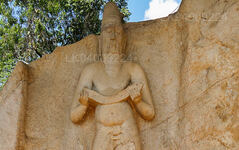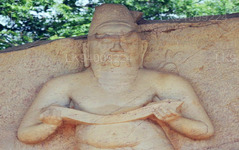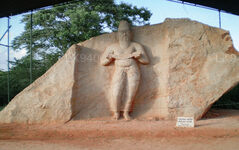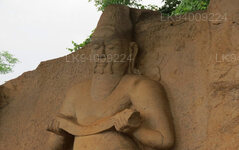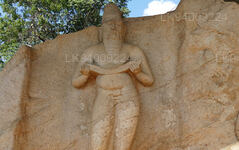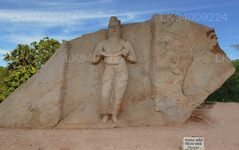
Город Полоннарува
Полоннарува, объект Всемирного наследия ЮНЕСКО на Шри-Ланке, была средневековой столицей страны (XI–XIII века). Город славится хорошо сохранившимися руинами, включая знаменитые статуи Гал Вихара, и впечатляющей архитектурой, отражающей величие древней сингальской цивилизации.
Pulasthi Statue
The statue is located to the north of the city of Polonnaruwa, and close to the eastern bank of the Parakrama Samudra reservoir, which was built by Parakramabahu I himself. It is about 100 metres (330 ft) north of the ancient Potgul Vehera monastery
LocationThe statue is located to the north of the city of Polonnaruwa, and close to the eastern bank of the Parakrama Samudra reservoir, which was built by Parakramabahu I himself. It is about 100 metres (330 ft) north of the ancient Potgul Vehera monastery.
CharacteristicsThe statue was built presumably in the 12th century, during the reign of Parakramabahu I. The statue of Parakramabahu I is one of the best stone sculptures belonging to the Polonnaruwa period. The 11-foot-2-inch-high (3.40 m) statue is carved in high relief on a large boulder, with full use being made of its height. Its upper body is bare except for a single thread worn over the left shoulder.A long object is held in the hands. The statue's face carries a grave expression, with half-closed eyes, a high forehead, a long beard and a moustache. The shoulders of the statue are rounded, suggesting "extraordinary strength". The right leg is relaxed with the right knee bent forward slightly. The left leg carries the weight of the body, while the hip is also slightly inclined to the left. According to archaeologist Senarath Paranavitana, this statue is "the very embodiment of strength, majesty and dignity"
IdentityThe statue has not been positively identified, but the popular and widely accepted belief is that the statue is of King Parakramabahu I, who ruled the country 1153 to 1186. Historian Mendis Rohanadeera has suggested that the statue shows a man belonging to the Lambakanna clan, because a hare—a symbol of this clan—is depicted above the left shoulder of the statue. This supports the theory that it is a statue of Parakramabahu I, who was of the Lambakanna clan. However, another theory is that it is the statue of a sage; either Agastya or Pulasthi. The object held in the hands of the statue may be an ola (cured palm leaves) book. This, and the fact that it is located close to the Potgul Vehera, which was a library in ancient times, supports this theory. However, another belief is that the object is a "yoke of kingship".
О районе Полоннарува
Полоннарува — второй по величине город в северо-центральной провинции Шри-Ланки. Древний город Полоннарува внесен в список Всемирного наследия ЮНЕСКО. Полоннарува имеет богатую историю завоеваний и борьбы и по праву занимает третье место в Культурном треугольнике. Расположенная примерно в 140 км к северо-востоку от Канди, Полоннарува предлагает любителям истории и культуры множество интересных достопримечательностей, которые подарят им бесконечное удовольствие.
Значительная часть сохранившихся до наших дней руин – заслуга короля Паракрамы Баху I, который потратил значительные средства на городское планирование, включая парки, здания, ирригационные системы и так далее. Период его правления считается золотым веком, когда королевство процветало и процветало под руководством дальновидного правителя. Паракрама Самудра – это гигантский водоём, названный в честь своего покровителя. Популярный Королевский дворец короля, Зал аудиенций, окружённый изящными каменными слонами, и Купальный бассейн отражают выдающиеся инженерные возможности того времени.
О Северо-Центральной провинции
Северо-Центральная провинция, крупнейшая провинция страны, занимает 16% её территории. Она состоит из двух округов: Полоннарува и Анурадхапуре. Анурадхапура — крупнейший округ Шри-Ланки. Его площадь составляет 7128 км².
Северо-Центральная провинция обладает многочисленными возможностями для инвесторов, желающих открыть свой бизнес, особенно в сельском хозяйстве, агропромышленном комплексе и животноводстве. Более 65% населения Северо-Центральной провинции зависит от основных отраслей сельского хозяйства и агропромышленного комплекса. NCP также называют «Вью Бенди Радже», поскольку в провинции расположено более 3000 средних и крупных резервуаров. Шри Маха Бодия, Руванвели Сейя, Тупарама Дагеба, монастырь Абаягири, Полоннарува Ранкот Вехера и Ланкатилаке – все это пугает.

